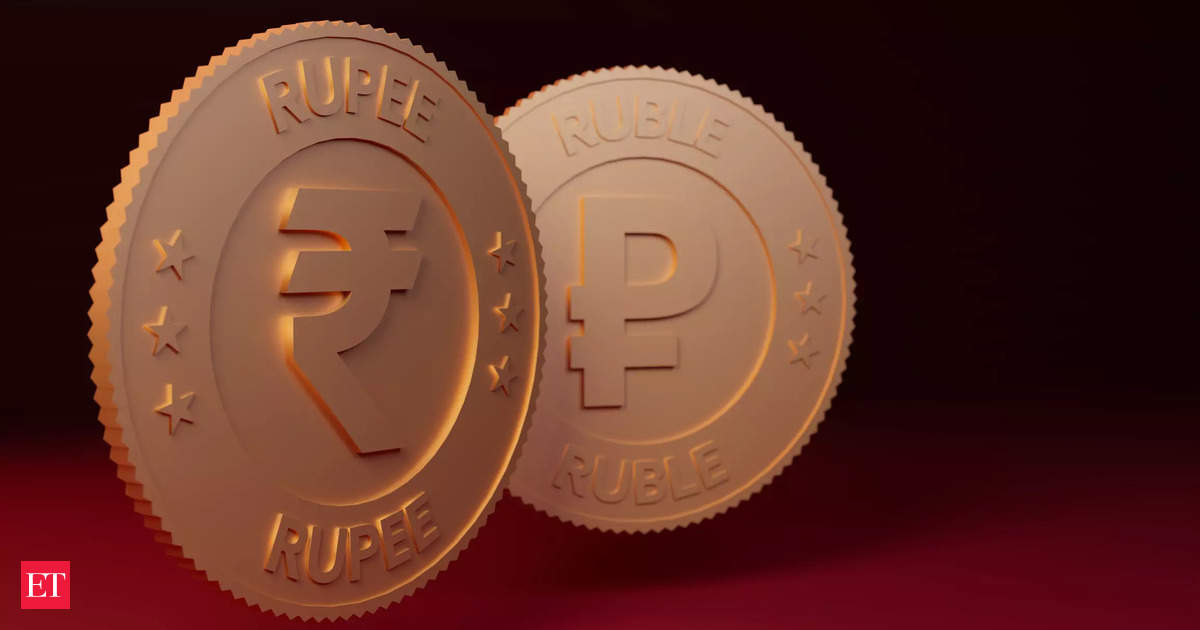A reference rate or exchange rate aims to overcome the dollar trade barriers Raised by US sanctions imposed on Russia in February 2022.
These issues, along with the implementation of a payment confirmation mechanism, are expected to be discussed during a meeting of senior central bank officials and bankers in Moscow this week, two industry insiders told ET. Reserve Bank of India (Reserve Bank of India) recently received feedback from banks and financial institutions dealing with Russian funds registered in India.
Some Russian financial institutions had already approached the Reserve Bank of India to set up a mechanism to allow them to use rupees held in special accounts in India to invest in Indian stocks and securities. There is a cumulative balance of rupees held in special accounts, or vostro, held by Russian banks in Indian banks.
This is because rupee payments for Russian imports exceed Indian exports to that country.
Reserve Bank of India Deputy Governor T. Rabi Sankar and senior officials from some state-run banks are part of the team visiting Moscow for a meeting of the joint India-Russia business council for banking and finance. Currently, banks handling export-import payments or any capital flow between the two countries have to take the dollar route to convert currencies. This means making two transactions, almost simultaneously, from rupees to US dollars and from dollars to rubles to arrive at a rupee-ruble exchange rate. However, as several Russian banks have been banned from using SWIFT (the international messaging system widely used to confirm cross-border payments), the scope for conventional monetary transactions involving dollar tranches has been significantly reduced.
“In these circumstances, a reference INR-rouble exchange rate could be used, which can be fixed by the Reserve Bank of India and the Bank of Russia, and reviewed to keep it in tune with the underlying market realities. However, for a reference exchange rate to be a transactional exchange rate, we need an arrangement where the two central banks open windows to intervene from time to time,” said a senior banker.
One possible mechanism could be similar to the one between India and the United Arab Emirates for settling transactions in currencies other than the dollar. Under this mechanism, exporters and importers in both countries can invoice transactions and make payments in rupees or dirhams to settle the transactions, while the central banks agree to accept the foreign currency in exchange for the domestic currency. In such an arrangement, the presence of the central banks, which play the role of a kind of market maker that would accept the foreign currency, would provide a certain degree of comfort.
“In their comments to the RBI, some of the banks have left it to the regulator to decide on a suitable system, with adequate security safeguards, that could be an alternative to SWIFT,” another person said.
Disclaimer:
The information contained in this post is for general information purposes only. We make no representations or warranties of any kind, express or implied, about the completeness, accuracy, reliability, suitability or availability with respect to the website or the information, products, services, or related graphics contained on the post for any purpose.
We respect the intellectual property rights of content creators. If you are the owner of any material featured on our website and have concerns about its use, please contact us. We are committed to addressing any copyright issues promptly and will remove any material within 2 days of receiving a request from the rightful owner.

